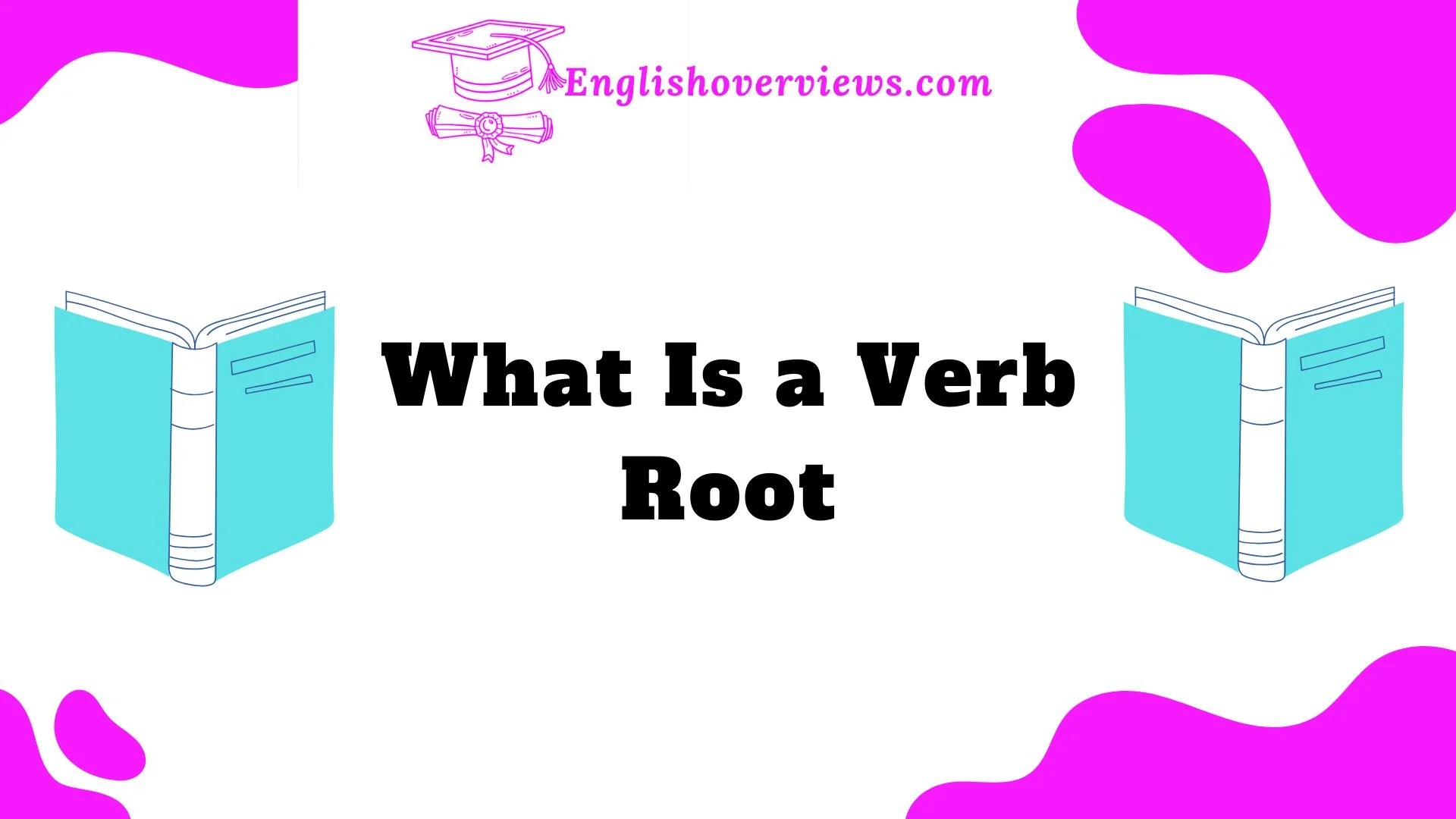Understanding the core of a language often begins with mastering its building blocks. Verb roots, the foundational forms of verbs, are a critical part of grammar and language learning. Whether you’re a native speaker or learning English as a second language, knowing how verb roots work can dramatically improve your ability to form sentences and communicate effectively.
In this blog post, we’ll dive deep into the world of verb roots. We’ll explain their importance, explore how they shape grammar, and provide real-world examples to make the concept crystal clear. You’ll also learn the difference between regular and irregular verbs, how to identify verb roots, and why they’re essential for language learners.
Ready to simplify your understanding of verbs and elevate your grammar skills? Let’s get started!
Understanding the Basics of Verb Roots
What Is a Verb Root?
A verb root is the simplest, unaltered form of a verb before any prefixes, suffixes, or inflections are added. It’s the base upon which all other forms of the verb are built.
For example:
- The verb root of “running” is run.
- The verb root of “uncovered” is cover.
Verb roots are essential because they allow us to conjugate verbs into various tenses, moods, and voices while maintaining the original meaning.
Universal Traits of Verb Roots
While verb roots differ across languages, they share some universal characteristics:
- Simplicity: Verb roots are free from grammatical markers like tense or person.
- Foundation: All conjugations of a verb stem from its root.
- Universality: Every verb in every language has a root, though its identification can vary.
The Role of Verb Roots in Grammar Construction
Verb roots serve as the building blocks of language. They enable us to:
- Create Tenses: By adding suffixes or auxiliary verbs (e.g., “walk” → “walked”).
- Change Voices: Active or passive forms rely on the same root (e.g., “build” → “is built”).
- Express Moods: From commands to hypothetical situations, verb roots adapt seamlessly.
For instance, consider the verb root write:
| Form | Sentence Example |
| Base Form (root) | “I write every day.” |
| Past Tense | “She wrote a letter.” |
| Present Participle | “They are writing an essay.” |
| Past Participle | “The book was written by her.” |
As you can see, the verb root remains consistent while endings and auxiliary verbs transform its use.
Regular vs. Irregular Verbs: The Impact on Roots
Regular Verbs
Regular verbs follow predictable patterns when conjugated. Their verb roots remain intact, and endings like -ed or -ing are simply added.
Examples of Regular Verbs:
- Talk → talked, talking
- Jump → jumped, jumping
Why This Matters: Regular verbs are easier for learners to master since their patterns are consistent.
Irregular Verbs
Irregular verbs, on the other hand, break the rules. Their verb roots often change unpredictably when conjugated.
Examples of Irregular Verbs:
- Go → went, gone
- Eat → ate, eaten
Pro Tip: Memorizing irregular verbs through practice and repetition is crucial, as there are no shortcuts to predicting their forms.
Regular Verb Conjugation: Patterns and Examples
Regular verbs make learning English simpler. Their verb roots remain unchanged, and predictable endings are added.
Here’s a table to clarify:
| Verb Root | Present Tense | Past Tense | Present Participle | Past Participle |
| Walk | Walk | Walked | Walking | Walked |
| Play | Play | Played | Playing | Played |
| Cook | Cook | Cooked | Cooking | Cooked |
Tips for Identifying Regular Verbs:
- Look for predictable endings like -ed or -ing.
- Check if the verb follows consistent rules in different tenses.
Irregular Verb Conjugation: Challenges and Examples
Irregular verbs defy the norms. Their roots often undergo significant changes when conjugated.
Examples:
- Begin → began, begun
- Drive → drove, driven
Case Study: “To Be”
The verb “to be” is one of the most irregular verbs in English. Its conjugation is entirely unpredictable:
- Base Form: Be
- Present Tense: Am, is, are
- Past Tense: Was, were
- Past Participle: Been
This irregularity makes “to be” a fascinating yet challenging verb to master.
Identifying Verb Roots in English
How to Find a Verb Root
- Remove Endings: Strip away suffixes like -ed, -ing, or -s.
- Example: “Running” → Run
- Ignore Prefixes: Focus on the core of the verb.
- Example: “Uncover” → Cover
Challenges in Identifying Verb Roots
- Homonyms: Words with multiple meanings can confuse learners.
- Example: “Lead” (to guide) vs. “Lead” (a metal).
- Phrasal Verbs: Verb roots in phrases like “give up” may not be obvious.
Examples of Verb Roots in Action
Here are real-world examples to illustrate verb roots in sentences:
- Write:
- Base Form: “I write emails daily.”
- Past Tense: “She wrote a novel.”
- Present Participle: “They are writing essays.”
- Run:
- Base Form: “He runs every morning.”
- Past Tense: “We ran to the park.”
- Present Participle: “She is running fast.”
The Five Forms of Verbs and Their Roots
Every verb has five primary forms. Here’s how they connect to their roots:
| Form | Example with ‘Run’ |
| Base Form | Run |
| Past Simple | Ran |
| Past Participle | Run |
| Present Participle | Running |
| 3rd Person Singular | Runs |
Significance of Verb Roots in Language Learning
Why Are Verb Roots Important?
- They simplify grammar rules for learners.
- They create a foundation for building tenses and sentences.
- They aid in recognizing patterns across different languages.
Example:
A Spanish learner can connect the English verb root “run” to its Spanish counterpart “correr.” Recognizing the root simplifies vocabulary acquisition.
FAQs
Q1: What is a verb root in English?
A verb root is the simplest form of a verb before any changes like suffixes or prefixes are applied.
Q2: How can I identify a verb root?
Remove prefixes, suffixes, and inflectional endings to isolate the base form of the verb.
Q3: What’s the difference between regular and irregular verbs?
Regular verbs follow consistent patterns when conjugated, while irregular verbs do not.
Q4: Why are verb roots important?
They form the basis of all verb conjugations, helping with grammar and language learning.
Q5: Are verb roots the same in all languages?
No, but the concept of a foundational form exists in most languages.-

English Overviews is a resourceful website dedicated to providing valuable content related to grammar and vocabulary. AD has made notable contributions, sharing insights on various subjects, including WordPress themes and plugins. The primary goal of the site is to help users improve their English language skills effectively.











